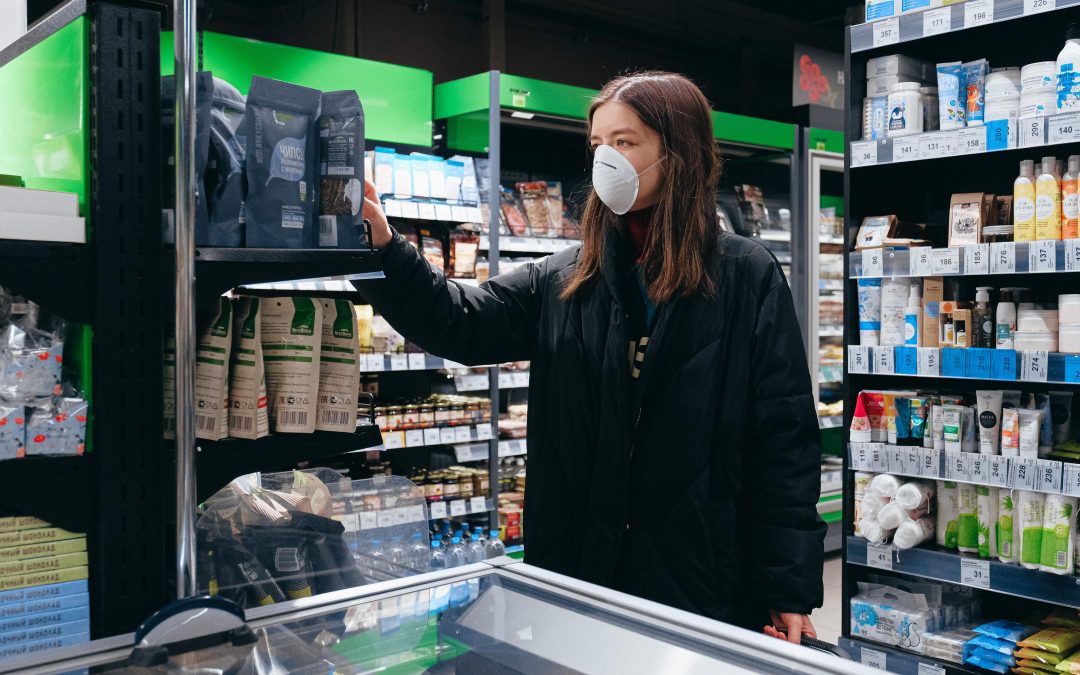- Design industry shaping loyalty programs
- Integrate easily and go live quicker
- Deliver hyper-personalized consumer experiences
Blue Rewards from Al Futtaim Group Shares Loyalty Success Stories and Evolution. Watch Podcast >
Capillary Announces 2nd Annual Captivate 2025 Summit: Transforming Loyalty Management with New AI Tech Read more >

The fear and apprehension from the novel coronavirus is forcing more consumers into a primarily digital way of life. In a bid to stay safe, social distancing is the new norm, and many of us have forgone visits to our favorite stores and restaurants. Across the world, lockdowns and restrictions have caused a drastic decrease in retail sales, and many traditional retailers are currently grappling with zero cash inflow; a question mark looming over their future.
Here at Capillary, the Data Science and Analytics team studies customer interactions with over 400 brands across the globe. Based on analyzing transaction data from the brands we serve, as well as from numerous other studies, we know that a fully-engaged and loyal customer contributes more revenue than an uncommitted or disengaged customer— an average of 50% more, according to one research article by Gallup. Although customer engagement, marketing and support become more difficult during economic downturns and turbulent times, they become all the more important to drive revenue and get the brand back to its feet.
A sensitive situation like the COVID-19 crisis requires Customer Experiences based on empathetic and emotional engagement. Wise marketers soon realized that blasting consumers with a barrage of generic, irrelevant communication is hurting the brand twofold: it drains marketing budget, and also spreads the sentiment that the brand is apathetic to consumer needs. Along with empathetic engagement, it is crucial for brands to time their engagement perfectly. This means reaching out at the right time during the recovery period with the most relevant communication for customers.
So how does data help the brand deliver these strategies and create a win-win situation for itself and customers? Especially in times when resources are scarce and communication must take place with caution?
In this article, Capillary’s Data Science team compiled key strategies that focus on enhancing brand engagement and growing revenue during and after the Coronavirus pandemic.
A recent study by Bain & Company details how consumer demand typically fluctuates during an epidemic, with variations based on the type of industry and products. For example, the apparel sector is likely to show behavior similar to the Dip & Rebound graph as per the study of historical data surrounding pandemics and recovery. Based on what their recovery may look like, it is imperative for brands to prepare in advance, yet not stock too much (where they’ll exceed demand and be left with excess unseasonal stock) or too little.
Identifying the right time to communicate offers and promotions to customers is a strong way to avoid being tagged as a brand indifferent to customer well-being. Initiating product campaigns at the wrong time will also make the customer simply ignore the communication. Based on our analyses of post covid trends in China, we recommend initiating campaigns after the recovery period starts, and allowing for at least 1-2 weeks of cooling period to send campaign communications. You can consider the recovery period to start when weekly sales improve by over 20% for two consecutive weeks, indicating that some customers have started coming back.
Another reason to avoid communicating before this period is because customers are certainly going to be inundated with messages and emails from multiple brands once regional lockdowns lift, even though customers will still be apprehensive about their safety.
To understand the type of relevant campaigns a brand should send customers during the business recovery phase, we recommend a two-pronged strategy. The objective here is to ensure that after the coronavirus pandemic dies down, the most valuable and loyal customers are engaged first, prioritizing that these customers come back to the store. For this reason, reserve your more aggressive campaigns for your best customer (even though during normal times, these campaigns are for the least engaged customers).
Outcome: This segmentation will ensure the brands can focus on “TOP X% customers” (X will vary from brand to brand and marketing budget) to bring them back to the stores on priority. These top customers will need to be engaged in the most effective manner.
Typically, product sales follow almost a 20-80 strategy— which means 20 percent of your products contribute to 80 percent of your sales. Focusing on these products will allow brands to maximize their return from promotions, and channel their efforts towards the most profitable products
For some brands, accomplishing the above analysis and segmentations may be easier said than done. For a younger brand with lower volumes of customer data, basic segmentation like demographics and location can be done manually. However, these generic segmentations cannot be used for building advanced purchase propensities models. Furthermore, it would be a tedious manual effort to accurately create complex personas and purchase-pattern segments based on changing customer behavior.
Although relevant communication is the key to gaining consumer mindshare, it is an increasingly herculean task to implement personalization at scale, given the pace of change in consumer behaviour and exponential rise in data volumes. We recommend that brands create centralized data pools using omnichannel analytics platforms, and deliver more personalized customer experiences using AI-powered marketing solutions.
AI-Powered Adaptive Segmentation runs on an intelligent algorithm that constantly ‘learns’ more about the customer every time she engages with the brand – whether on social media, email, website or in store. Adaptive segmentation also identifies customers based on higher conversion probability, rather than simple demographics. This is where emerging technologies like AI and ML can help brands deepen consumer engagement through data analysis, and accelerate revenue growth.

May 15, 2020 | 4 Min Read
The fear and apprehension from the novel coronavirus is forc